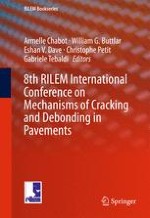2016 | OriginalPaper | Buchkapitel
M4-5n Numerical Solution Using the Mixed FEM, Validation Against the Finite Difference Method
verfasst von : Hanan Nasser, Jean-Michel Piau, Olivier Chupin, Armelle Chabot
Erschienen in: 8th RILEM International Conference on Mechanisms of Cracking and Debonding in Pavements
Verlag: Springer Netherlands
Aktivieren Sie unsere intelligente Suche, um passende Fachinhalte oder Patente zu finden.
Wählen Sie Textabschnitte aus um mit Künstlicher Intelligenz passenden Patente zu finden. powered by
Markieren Sie Textabschnitte, um KI-gestützt weitere passende Inhalte zu finden. powered by
